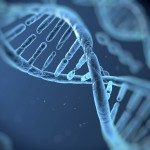Link to Pubmed [PMID] – 19186249
Link to HAL – hal-04159604
Link to DOI – 10.1016/S0070-2153(08)00608-X
Mouse Models of Developmental Genetic Disease, 84, Elsevier, pp.385-429, 2008, Current Topics in Developmental Biology, 978-0-12-374454-8. ⟨10.1016/S0070-2153(08)00608-X⟩
Hearing impairment is a frequent condition in humans. Identification of the causative genes for the early onset forms of isolated deafness began 15 years ago and has been very fruitful. To date, approximately 50 causative genes have been identified. Yet, limited information regarding the underlying pathogenic mechanisms can be derived from hearing tests in deaf patients. This chapter describes the success of mouse models in the elucidation of some pathophysiological processes in the auditory sensory organ, the cochlea. These models have revealed a variety of defective structures and functions at the origin of deafness genetic forms. This is illustrated by three different examples: (1) the DFNB9 deafness form, a synaptopathy of the cochlear sensory cells where otoferlin is defective; (2) the Usher syndrome, in which deafness is related to abnormal development of the hair bundle, the mechanoreceptive structure of the sensory cells to sound; (3) the DFNB1 deafness form, which is the most common form of inherited deafness in Caucasian populations, mainly caused by connexin‐26 defects that alter gap junction communication between nonsensory cochlear cells.



